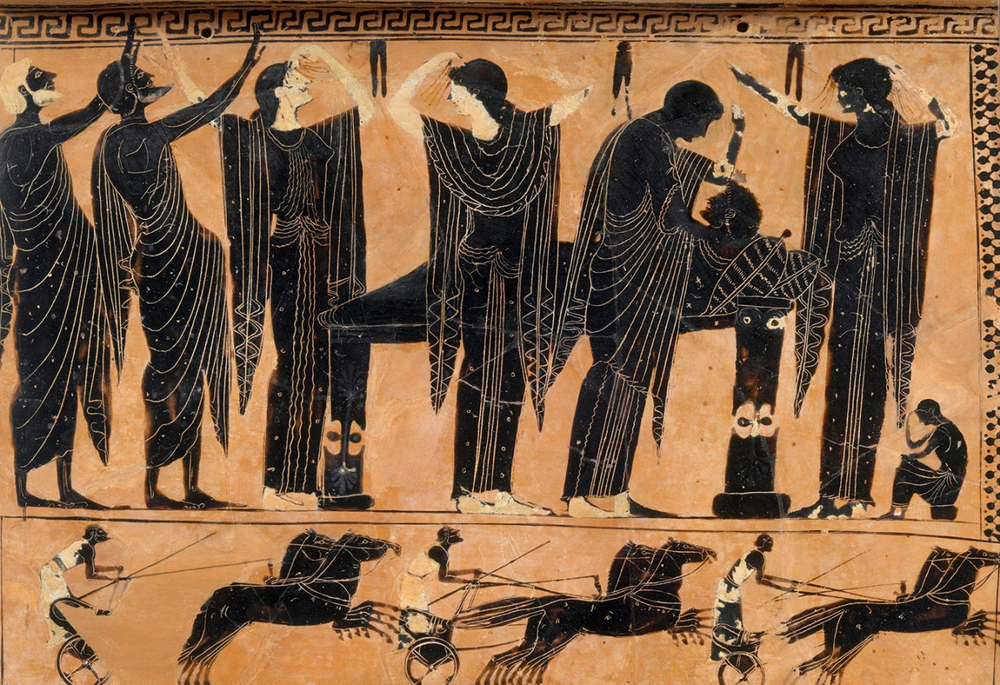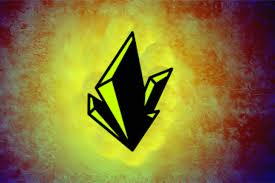Blockchain 3.0 Anniversary: Iterating for Landing Applications, Blockchain 3.0 Technology Progress
From the end of 2017, it was suggested that the blockchain would enter the 3.0 phase. Especially in 2018, the industry generally believes that this year is a blockchain of 3.0 yuan. The so-called blockchain 3.0, the current consensus is that the blockchain is applied to the real economy.
Each iteration of the blockchain has an iconic technical mainline. For example, Blockchain 1.0 is the digital currency era, marked as the 2009 Bitcoin main online line, and the later Litecoin and Ripple coins are all applied around digital currency.
Blockchain 2.0 is the era of online smart contracts. It is the main online line of Ethereum in 2014. After that, whether it is a public chain project such as overseas IOTA, star chain, domestic NEO, quantum chain, or R3, super-book of alliance chain Most of them are also based on smart contracts.
Blockchain 3.0 is the main online line dedicated to empowering the real economy. Marked in April last year, Thunder released a Thunderbolt chain of millions of TPS; and then the EOS main online line in June was also considered to be the representative of Blockchain 3.0. This generation of blockchain system core solves the problem of application landing performance, and then the alliance chain system, such as Baidu Super Chain, Tencent Blockchain, Ant Blockchain, etc., are far ahead of the 2.0 era products in performance.
- Twitter Featured: The UK's largest travel company accepts bitcoin payments; SBI will be removed from BCH
- Blockchain combined with identity authentication, not getting lost in the digital world
- The exchange has a large blockchain governance power – the center of power in a decentralized world
With the Xunlei chain flag on the block line chain 3.0 as the node, the past year, around the blockchain application landing, technology continues to improve.
First, the performance has been greatly improved
In the era of blockchain 1.0 and 2.0, the application scenario is limited to online virtual digital asset transactions. Whether it is bitcoin, games based on Ethereum, or exchanges, the so-called transaction assets are essentially virtual on the line. The developers of the blockchain are not unwilling to land, but the lack of performance is the main cause.
Last year, Eitafang founder Vitalik Buterin directly acknowledged:
“The efficiency of the public chain is not high enough, so it is difficult to convince people to accept the use of the current public chain. There are many inconveniences in the use process, such as longer confirmation time, higher transaction costs, etc.”
Blockchain 1.0, 2.0 typical product performance
Mutual Chain Pulse Selection The typical blockchain system for the 1.0 and 2.0 eras of blockchains includes bitcoin's Bitcoin Core 0.14 version, Ethereum's Metropolis (vByzantium) phase version, and Superbook's Fabric 1.0 version. These versions have a significant version update in 2017. The highest throughput is the super-books Fabric 1.0, the theoretical TPS is thousands, but the user actually feedbacks the TPS at 300-500. Even so, there is still pressure to deal with large-scale transactions. The throughput of VISA can be 24000 TPS. In terms of transaction confirmation time, if the 2.0 public chain system is applied, the user experience is as bad as it seems to return to the pre-Internet era. Not to mention, whether it is Bitcoin, Ethereum or a super-book, its use has a large transaction cost.
Therefore, the product of Blockchain 3.0 is the first to solve the performance problem of the blockchain. The products of the blockchain 1.0 and 2.0 era have also upgraded their performance.
The inter-chain pulse selected three blockchain projects in the blockchain 3.0 era: Thunderbolt, EOS and Baidu Super Chain. In addition, Bitcoin and Ethereum's upgrade plan for 3.0 were compared to observe the improvement zone. The way blockchain performance.
On the infrastructure, multi-chain mode is the primary way to improve performance. The isomorphic multi-chain of the Thunderbolt chain, the side chain of the EOS and the root chain + parallel chain of the Baidu super chain, and the fragmentation technology of Ethereum basically adopt this idea.
Because of the distributed nature of the blockchain, the single-chain computing capability is limited, and multi-chain parallelism under the canonical architecture is a way to quickly improve performance in a short time. Bitcoin is not suitable for multi-chain communication because it needs to ensure uniqueness. Therefore, lightning network technology is adopted. The lightning network is a multi-signal method between two nodes that do not need to trust. Both parties mortgage the same amount of bitcoin to establish. A two-way payment channel, a bitcoin Layer 2 network that conducts transactions in this two-way payment channel. Simply put, transactions take place outside the chain.
In addition to the architecture layer, changes in the consensus mechanism are also technical means to improve accounting performance. The above blockchain project, in addition to Bitcoin, has evolved a model of equity proof bookkeeping, which is the “S” (stake) in POS. The S of the Thunderbolt is replaced by A (ability), that is, the capable node, and the essence is also a proof of rights.
In practice, the emerging blockchain system is clearly more dominant. The Thunderbolt chain realized a million TPS in April last year; the performance of the Baidu super chain single system reached 100,000 TPS; the EOS single chain can also achieve 4000 TPS.
Bitcoin and Ethereum are faced with the challenge of hard forks if they want to improve their performance. Ethereum consciously set the "difficult bomb" time period. This is also an important reason why their development team did not land as early as 2017.
However, the iteration of technology is not for performance but for performance, but for the application of the physical industry – this is also the essence of blockchain 3.0. Since the first anniversary of the launch of the Thunderbolt chain, the physical applications running in the Thunderbolt chain are gradually increasing, including sharing economy, traceability, catering, e-commerce, and copyright. Through the super-chain system, Baidu also laid out projects such as copyright and court deposits. However, EOS does not currently run any real economy application. Strictly speaking, EOS is a product of Blockchain 3.0, but it is still a 2.0 service.
Second, distributed storage matching blockchain system
In addition to the significant increase in performance, since April 2018, the technology upgrade in the blockchain 3.0 era has also seen storage capacity and expansion.
Only dealing with the accounting problem of digital currency, products such as Bitcoin and Ethereum have already generated pressure. Taking Bitcoin as an example, a block is generated every 10 minutes, the block size is 1MB, and the annual block growth rate is 24 * 60 / 10 * 365 = 51.3GB, after 10 years, probably takes 5T space. Suppose a blockchain system of millions of TPS is calculated according to a transaction data of 100 bytes. The amount of block data for one day is 1000000 * 100 * 60 * 60 * 24 = 7.8TB, and the amount of block data for one year is 7.8 * 365 = 2868TB.
Entering the blockchain 3.0 phase, the user's demand for storage is further increased. Also need to include smart contract code and user-uploaded pictures, videos, etc., so the blockchain 1.0, 2.0 era products can not meet the storage requirements.
Therefore, Blockchain 3.0 requires new storage system support.
The inter-chain pulse continues to select the blockchain 3.0 product Thunderbolt, EOS and Baidu Super Chain, compare the 2.0 Ethereum products, and see the blockchain's ability to store large files.
Strictly speaking, no one will store large files on Ethereum, and Ethereum uses graphics cards to mine, which is not for storing large files. When the user initiates a transaction, the price of the unit Gas is given in ETH. The miners have already configured the lowest Gas price, and the higher minimum Gas price will bring more profit to the miners, but will need to give up more transactions. This forms a market in which ETH is traded in units of Gas. The less Gas the code consumes, the more efficient the resources needed to execute the code. Ethereum has several storage-related modes: Volatile Stack Access: Stack; Volatile Memory Access: Memory; Non-Volatile: Storage.
The most expensive of these is non-volatile storage. When the data size is a few kilobytes, the memory operation is similar to the cost of using the stack operation, but as the data size increases, the cost increases exponentially. This relationship is shown below:
If non-volatile storage is used, then inputting 1MB of content requires payment of 3.28 Ethereums as GAS (slow speed). According to the market price on April 18, it is required to be 115,000 yuan.
The problem facing Ethereum is that there are usually problems with blockchain 2.0 and previous systems, and they have more priority chainchain chain trading behavior.
In order to solve the high storage cost and better connection with the physical world, the blockchain 3.0 system generally adopts other storage technologies. Xunlei Chain has developed its own TCFS system, EOS uses IPFS, and Baidu Super Chain uses Baidu Cloud's CFS system.
But it is worth noting that Baidu Cloud's CFS system is a centralized storage system. In fact, many blockchain BAAS platforms are centralized for storage, including Alibaba Cloud, Tencent Cloud, and Amazon's AWS Cloud. However, the situation of central cloud downtime and loss of data has occurred, especially in the development of edge computing and blockchain, and there is an urgent need for more secure and more compatible storage technologies.
By combining this distributed storage and blockchain technology, users can store large amounts of information in a distributed storage network and place immutable permanent addresses in blockchain transactions. A distributed storage network will provide a publicly accessible database, while a blockchain provides a public verification mechanism that coordinates operations. Both TCFS and IPFS are distributed storage technologies.
However, in view of the current development, the TCFS supporting the Thunderbolt chain was launched in August last year. Recently, the Thunderbolt has upgraded the TCFS, abstracting the storage layer and adapting it to multiple storage engines to meet the requirements of different data volume scenarios. In comparison, the current EFS IPFS is still unknown.
In terms of the price of use, the storage cost of TCFS is one-thousandth of a million in Taifang, even lower than the centralized storage such as Baidu Cloud.
Partial blockchain storage comparison
From the application point of view, HGBC (Human Genome Block Chain) built on the Thunderbolt chain has stored genetic test data on TCFS. A complete genetic test data of 50-60GB, its privacy needs absolute protection, distributed storage TCFS provides and Thunder chain to support the business.
Third, the expansion is greatly improved
In order to apply the application quickly and efficiently, the third-generation blockchain system has carried out many technical iterations in terms of scalability, which is also a feature of the blockchain 3.0 product.
As we all know, if the blockchain needs to be applied, a good and expansive development environment is indispensable. The development environment of the blockchain is the blockchain virtual machine. The blockchain virtual machine is the operating environment of the blockchain smart contract, which can be regarded as a virtual computer (including CPU, memory, storage) that can simulate the executable contract instructions of the software. Similar to the CPU can execute assembly instructions, the blockchain virtual machine can execute contract instructions.
Each node participating in the blockchain network runs a virtual machine. Sending a legitimate transaction to the blockchain network to invoke the contract triggers each node's virtual machine to execute the contract code and record the execution result.
The representative product of Blockchain 2.0, Ethereum developed the EVM virtual machine, and most of the products in the same period have the virtual machine as a standard. EVM virtual machines are also used, including the affiliate chain system superbook.
But the Solidity used by EVM has discouraged many programmers who want to transform blockchain development. Especially as a beginner, the deployment will often fail, the reason can not be found, and the block synchronization is also very slow.
This hinders the efficiency of the fast application of the blockchain. With the increasing demand for virtual machines and smart contracts for blockchain applications, blockchain virtual machines are gradually improving in technology. In blockchain 3.0, virtual machines are mainly developed in the following aspects:
(1) Multi-language support for smart contracts;
(2) faster running speed;
(3) More rich system tool support;
(4) The virtual machine is more secure.
In order to solve this problem, EOS adopted the WASM virtual machine. Programmers can develop in familiar C/C++. In part, because of this change, DAPP deployed on EOS is growing rapidly.
Comparison of virtual machines in different blockchain systems
Fourth, the blockchain 3.0 technology is not completed
When the performance, storage, and scalability issues are solved one after another, the blockchain R&D personnel have envisaged that the blockchain 3.0 will be applied on a large scale, which will form a chain-one application situation. The “data chimney” of the Internet world is in the blockchain world. Not only has it not been resolved, but the situation of data fragmentation is even more serious.
There are two major problems to solve here:
1. The problem of data opening between chain and chain can also be understood as the communication problem of chain and chain;
2. Security and privacy issues with data on the chain.
In fact, developers have also created solutions, but inefficiency is not enough to support the application of blockchain 3.0.
Researchers have invented a variety of cross-chain technologies including:
1. Notary schemes;
2. Sidechains/relays (Sidechains/relays);
3. Hash-locking;
4. Distributed private key control.
5. "Notary mechanism + side chain" hybrid technology.
Early cross-chain technology is represented by Ripple and BTC Relay, and they are more concerned with asset transfer; existing cross-chain technologies are represented by Polkadot and Cosmos, and more concerned with cross-chain infrastructure, they are also become blockchains. 3.0 infrastructure.
In March of this year, Cosmos was once a hot spot in the blockchain industry, which shows the industry's expectation of cross-chain technology. According to Cosmos's introduction, it is divided into three steps. Now that the first stage is completed, waiting for the network to stabilize, you can vote through the community chain to decide when to open the transfer function, then enter the second stage, the third stage. It is the implementation of IBC.
At present, the project's block rate is close to 7 seconds, and the TPS is extremely low. Although the lab tested the project to achieve a thousand-level TPS, it was still a long time away from the actual line.
The security and protection of privacy is another big problem that plagues Blockchain 3.0. There is a game rule in the Internet world: personal or corporate data, which cannot be controlled by itself, is used by the Internet platform. The emergence of blockchains has allowed people to see the dawn of solving this problem. Individual or corporate data can be recorded securely and encrypted, and rights can be determined by the blockchain. But data can only create value if it flows, how to use the data without invading privacy, and encounter similar problems when many blockchain projects are applied.
Cryptologists have also proposed many measures early, and the more famous ones are homomorphic encryption and zero-knowledge proof.
Homomorphic encryption is a method of performing calculations without prior decryption of encrypted data. By using homomorphic encryption to store data on the blockchain, balance can be achieved without any major changes to the blockchain attributes.
Zero Knowledge Proof (ZKPs) is a cryptographic technique that is a zero-knowledge proof that proves certain data operations without revealing the data itself, allowing both parties (certifiers and verifiers) to prove an offer. It is true and there is no need to disclose any information except that it is real. In cryptocurrency and blockchain, this usually refers to transactional information data.
However, according to reports, the current homomorphic encryption and zero-knowledge proof can only handle some cases, which is difficult to use on a large scale. Many foreign public chains use it as a research and development target. Domestically including Xunlei Chain, Baidu Super Chain, and Ant Blockchain are all key research projects.
Wenyu Mutual Chain Pulse Cao Yuan
Source: Interchain Pulse
Please indicate the source!
We will continue to update Blocking; if you have any questions or suggestions, please contact us!
Was this article helpful?
93 out of 132 found this helpful
Related articles
- Twitter Featured: Coin Security decided to take down BSV; ConsenSys seeks $200 million financing
- Community Governance, PoW Workload Proof and Commercialization
- Blockchain reshapes digital identities, which applications are worth looking forward to?
- Babbitt column | After the “no mining”, has the trend of the development of the blockchain industry changed?
- Internet and blockchain revolution: Are we in 1994? What should I do next?
- Domestically, should the blockchain industry standard be released? Li Ming: Misunderstanding, in fact, will publish the international standard for blockchain terminology
- About Cosmos, Ethereum and Polkadot, all you want to know is this (2)






